Deep into Laboratory: An Artificial Intelligence Approach to Recommend Laboratory Tests
Abstract
1. Introduction
2. Methods
2.1. Data Source
2.2. Data Collection and Study Populations
2.3. Data Preprocessing
2.4. Model Building
2.5. Evaluation Matrices
3. Results
3.1. Data Descriptions
3.2. Model Performance
3.3. Distribution of AUROC
3.4. Evaluation
4. Discussion
4.1. Main Findings
4.2. Current Research Gap and Possibility
4.3. Clinical Implications
4.4. Limitations
4.5. Future Prospects
5. Conclusions
Supplementary Materials
Author Contributions
Funding
Institutional Review Board Statement
Informed Consent Statement
Data Availability Statement
Conflicts of Interest
References
- Agarwal, R. Quality-improvement measures as effective ways of preventing laboratory errors. Lab. Med. 2014, 45, e80–e88. [Google Scholar] [CrossRef]
- Aesif, S.W.; Parenti, D.M.; Lesky, L.; Keiser, J.F. A cost-effective interdisciplinary approach to microbiologic send-out test use. Arch. Pathol. Lab. Med. 2015, 139, 194–198. [Google Scholar] [CrossRef]
- Vinker, S.; Kvint, I.; Erez, R.; Elhayany, A.; Kahan, E. Effect of the characteristics of family physicians on their utilisation of laboratory tests. Br. J. Gen. Pract. 2007, 57, 377–382. [Google Scholar] [PubMed]
- O’Sullivan, J.W.; Stevens, S.; Hobbs, F.R.; Salisbury, C.; Little, P.; Goldacre, B.; Bankhead, C.; Aronson, J.K.; Perera, R.; Heneghan, C. Temporal trends in use of tests in UK primary care, 2000-15: Retrospective analysis of 250 million tests. BMJ 2018, 363, k4666. [Google Scholar] [CrossRef]
- Hickner, J.; Thompson, P.J.; Wilkinson, T.; Epner, P.; Shaheen, M.; Pollock, A.M.; Lee, J.; Duke, C.C.; Jackson, B.R.; Taylor, J.R. Primary care physicians’ challenges in ordering clinical laboratory tests and interpreting results. J. Am. Board Fam. Med. 2014, 27, 268–274. [Google Scholar] [CrossRef]
- Zhi, M.; Ding, E.L.; Theisen-Toupal, J.; Whelan, J.; Arnaout, R. The landscape of inappropriate laboratory testing: A 15-year meta-analysis. PLoS ONE 2013, 8, e78962. [Google Scholar] [CrossRef]
- Ferraro, S.; Panteghini, M. The role of laboratory in ensuring appropriate test requests. Clin. Biochem. 2017, 50, 555–561. [Google Scholar] [CrossRef]
- Schumacher, L.D.; Jäger, L.; Meier, R.; Rachamin, Y.; Senn, O.; Rosemann, T.; Markun, S. Trends and between-Physician Variation in Laboratory Testing: A Retrospective Longitudinal Study in General Practice. J. Clin. Med. 2020, 9, 1787. [Google Scholar] [CrossRef]
- Huber, C.A.; Nagler, M.; Rosemann, T.; Blozik, E.; Näpflin, M.; Markun, S. Trends in Micronutrient Laboratory Testing in Switzerland: A 7-Year Retrospective Analysis of Healthcare Claims Data. Int. J. Gen. Med. 2020, 13, 1341. [Google Scholar] [CrossRef] [PubMed]
- Lippi, G.; Bovo, C.; Ciaccio, M. Inappropriateness in laboratory medicine: An elephant in the room? Ann. Transl. Med. 2017, 5, 82. [Google Scholar] [CrossRef]
- Ganguli, I.; Simpkin, A.L.; Lupo, C.; Weissman, A.; Mainor, A.J.; Orav, E.J.; Rosenthal, M.B.; Colla, C.H.; Sequist, T.D. Cascades of care after incidental findings in a US national survey of physicians. JAMA Netw. Open 2019, 2, e1913325. [Google Scholar] [CrossRef] [PubMed]
- Vrijsen, B.; Naaktgeboren, C.; Vos, L.; van Solinge, W.; Kaasjager, H.; Ten Berg, M. Inappropriate laboratory testing in internal medicine inpatients: Prevalence, causes and interventions. Ann. Med. Surg. 2020, 51, 48–53. [Google Scholar] [CrossRef] [PubMed]
- Basuita, M.; Kamen, C.L.; Ethier, C.; Soong, C. Reducing Inappropriate Laboratory Testing in the Hospital Setting: How Low Can We Go? JCOM 2020, 27. [Google Scholar] [CrossRef]
- Mrazek, C.; Simundic, A.-M.; Salinas, M.; von Meyer, A.; Cornes, M.; Bauçà, J.M.; Nybo, M.; Lippi, G.; Haschke-Becher, E.; Keppel, M.H. Inappropriate use of laboratory tests: How availability triggers demand–Examples across Europe. Clin. Chim. Acta 2020, 505, 100–107. [Google Scholar] [CrossRef] [PubMed]
- O’Sullivan, J.W.; Albasri, A.; Nicholson, B.D.; Perera, R.; Aronson, J.K.; Roberts, N.; Heneghan, C. Overtesting and undertesting in primary care: A systematic review and meta-analysis. BMJ Open 2018, 8, e018557. [Google Scholar] [CrossRef]
- Maillet, É.; Paré, G.; Currie, L.M.; Raymond, L.; de Guinea, A.O.; Trudel, M.-C.; Marsan, J. Laboratory testing in primary care: A systematic review of health IT impacts. Int. J. Med Inform. 2018, 116, 52–69. [Google Scholar] [CrossRef]
- Delvaux, N.; Van Thienen, K.; Heselmans, A.; de Velde, S.V.; Ramaekers, D.; Aertgeerts, B. The effects of computerized clinical decision support systems on laboratory test ordering: A systematic review. Arch. Pathol. Lab. Med. 2017, 141, 585–595. [Google Scholar] [CrossRef]
- Khalifa, M.; Khalid, P. Reducing unnecessary laboratory testing using health informatics applications: A case study on a tertiary care hospital. Procedia Comput. Sci. 2014, 37, 253–260. [Google Scholar] [CrossRef]
- Fang, D.Z.; Sran, G.; Gessner, D.; Loftus, P.D.; Folkins, A.; Christopher, J.Y.; Shieh, L. Cost and turn-around time display decreases inpatient ordering of reference laboratory tests: A time series. BMJ Qual. Saf. 2014, 23, 994–1000. [Google Scholar] [CrossRef]
- Eaton, K.P.; Levy, K.; Soong, C.; Pahwa, A.K.; Petrilli, C.; Ziemba, J.B.; Cho, H.J.; Alban, R.; Blanck, J.F.; Parsons, A.S. Evidence-based guidelines to eliminate repetitive laboratory testing. JAMA Intern. Med. 2017, 177, 1833–1839. [Google Scholar] [CrossRef]
- Schubart, J.R.; Fowler, C.E.; Donowitz, G.R.; Connors, A.F., Jr. Algorithm-based decision rules to safely reduce laboratory test ordering. Stud. Health Technol. Inform. 2001, 84, 523–527. [Google Scholar]
- Atique, S.; Hsieh, C.-H.; Hsiao, R.-T.; Iqbal, U.; Nguyen, P.A.A.; Islam, M.M.; Li, Y.-C.J.; Hsu, C.-Y.; Chuang, T.-W.; Syed-Abdul, S. Viral warts (Human Papilloma Virus) as a potential risk for breast cancer among younger females. Comput. Methods Programs Biomed. 2017, 144, 203–207. [Google Scholar] [CrossRef]
- Tsai, C.-Y.; Yang, H.-C.; Islam, M.; Hsieh, W.-S.; Juan, S.-H.; Chen, J.-C.; Khan, H.A.A.; Jian, W.-S. Psychotropic medications prescribing trends in adolescents: A nationwide population-based study in Taiwan. Int. J. Qual. Health Care 2017, 29, 861–866. [Google Scholar] [CrossRef]
- Hsing, A.W.; Ioannidis, J.P. Nationwide population science: Lessons from the Taiwan national health insurance research database. JAMA Intern. Med. 2015, 175, 1527–1529. [Google Scholar] [CrossRef]
- Luo, Y.; Szolovits, P.; Dighe, A.S.; Baron, J.M. Using machine learning to predict laboratory test results. Am. J. Clin. Pathol. 2016, 145, 778–788. [Google Scholar] [CrossRef]
- National Academies of Sciences, Engineering, and Medicine. Improving Diagnosis in Health Care; National Academies Press: Washington, DC, USA, 2015.
- Janssens, P.M. Managing the demand for laboratory testing: Options and opportunities. Clin. Chim. Acta 2010, 411, 1596–1602. [Google Scholar] [CrossRef]
- Fryer, A.A.; Smellie, W.S.A. Managing demand for laboratory tests: A laboratory toolkit. J. Clin. Pathol. 2013, 66, 62–72. [Google Scholar] [CrossRef]
- Yeh, D.D. A clinician’s perspective on laboratory utilization management. Clin. Chim. Acta 2014, 427, 145–150. [Google Scholar] [CrossRef]
- Delvaux, N.; Piessens, V.; De Burghgraeve, T.; Mamouris, P.; Vaes, B.; Vander Stichele, R.; Cloetens, H.; Thomas, J.; Ramaekers, D.; De Sutter, A. Clinical decision support improves the appropriateness of laboratory test ordering in primary care without increasing diagnostic error: The ELMO cluster randomized trial. Implement. Sci. 2020, 15, 1–10. [Google Scholar] [CrossRef] [PubMed]
- Louis, D.N.; Gerber, G.K.; Baron, J.M.; Bry, L.; Dighe, A.S.; Getz, G.; Higgins, J.M.; Kuo, F.C.; Lane, W.J.; Michaelson, J.S. Computational pathology: An emerging definition. Arch. Pathol. Lab. Med. 2014, 138, 1133–1138. [Google Scholar] [CrossRef]
- Hauser, R.G.; Shirts, B.H. Do we now know what inappropriate laboratory utilization is? An expanded systematic review of laboratory clinical audits. Am. J. Clin. Pathol. 2014, 141, 774–783. [Google Scholar] [CrossRef]
- Akan, P.; Cimrin, D.; Ormen, M.; Kume, T.; Ozkaya, A.; Ergor, G.; Abacioglu, H. The inappropriate use of HbA1c testing to monitor glycemia: Is there evidence in laboratory data? J. Eval. Clin. Pract. 2007, 13, 21–24. [Google Scholar] [CrossRef]
- Hawkins, R.C. Potentially inappropriate repeat laboratory testing in inpatients. Clin. Chem. 2006, 52, 784–785. [Google Scholar] [CrossRef]
- Weydert, J.A.; Nobbs, N.D.; Feld, R.; Kemp, J.D. A simple, focused, computerized query to detect overutilization of laboratory tests. Arch. Pathol. Lab. Med. 2005, 129, 1141–1143. [Google Scholar] [CrossRef] [PubMed]
- Wright, A.; Chen, E.S.; Maloney, F.L. An automated technique for identifying associations between medications, laboratory results and problems. J. Biomed. Inform. 2010, 43, 891–901. [Google Scholar] [CrossRef] [PubMed]
- Castelvecchi, D. Can we open the black box of AI? Nat. News 2016, 538, 20. [Google Scholar] [CrossRef]
- Buhrmester, V.; Münch, D.; Arens, M. Analysis of explainers of black box deep neural networks for computer vision: A survey. arXiv 2019, arXiv:191112116. [Google Scholar]
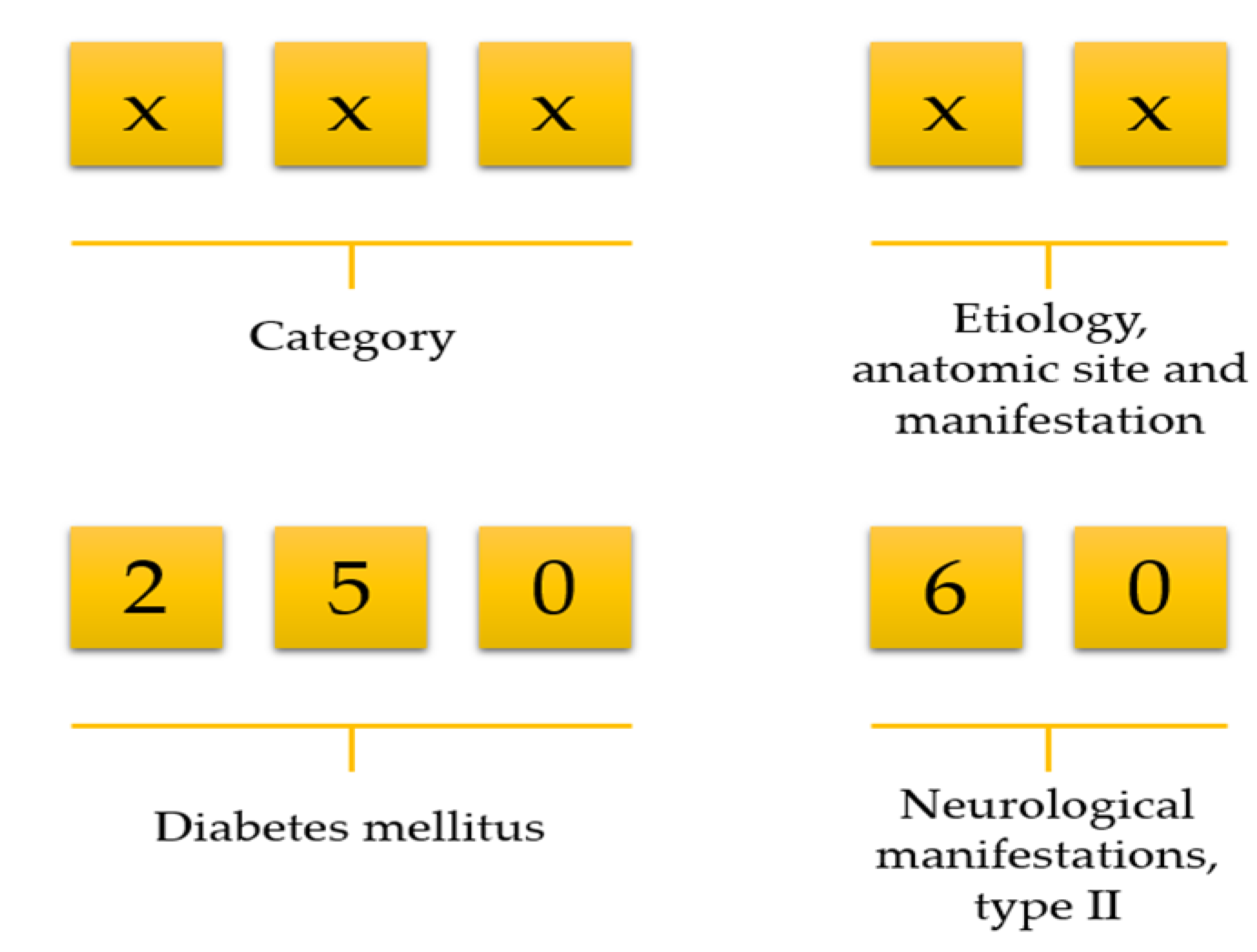
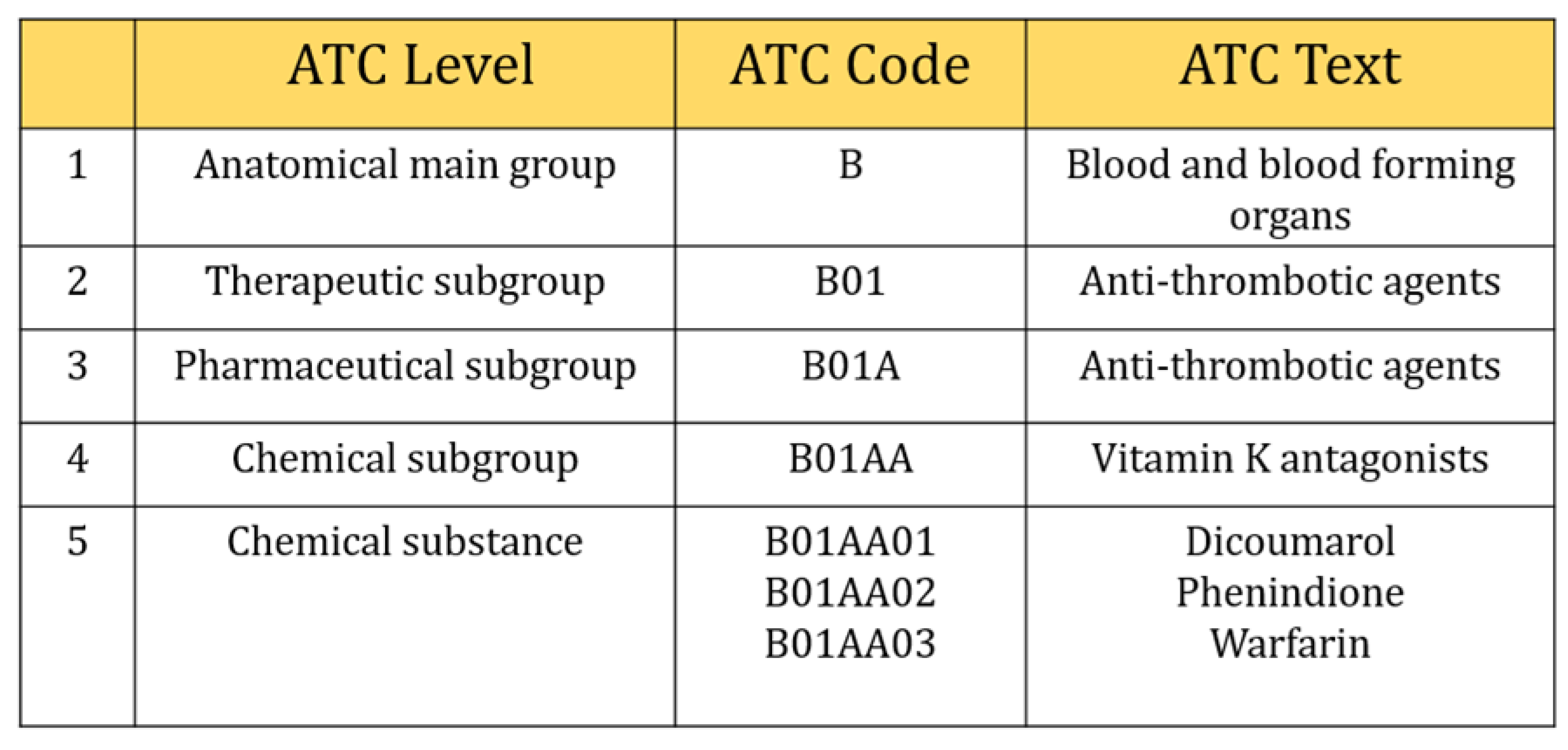

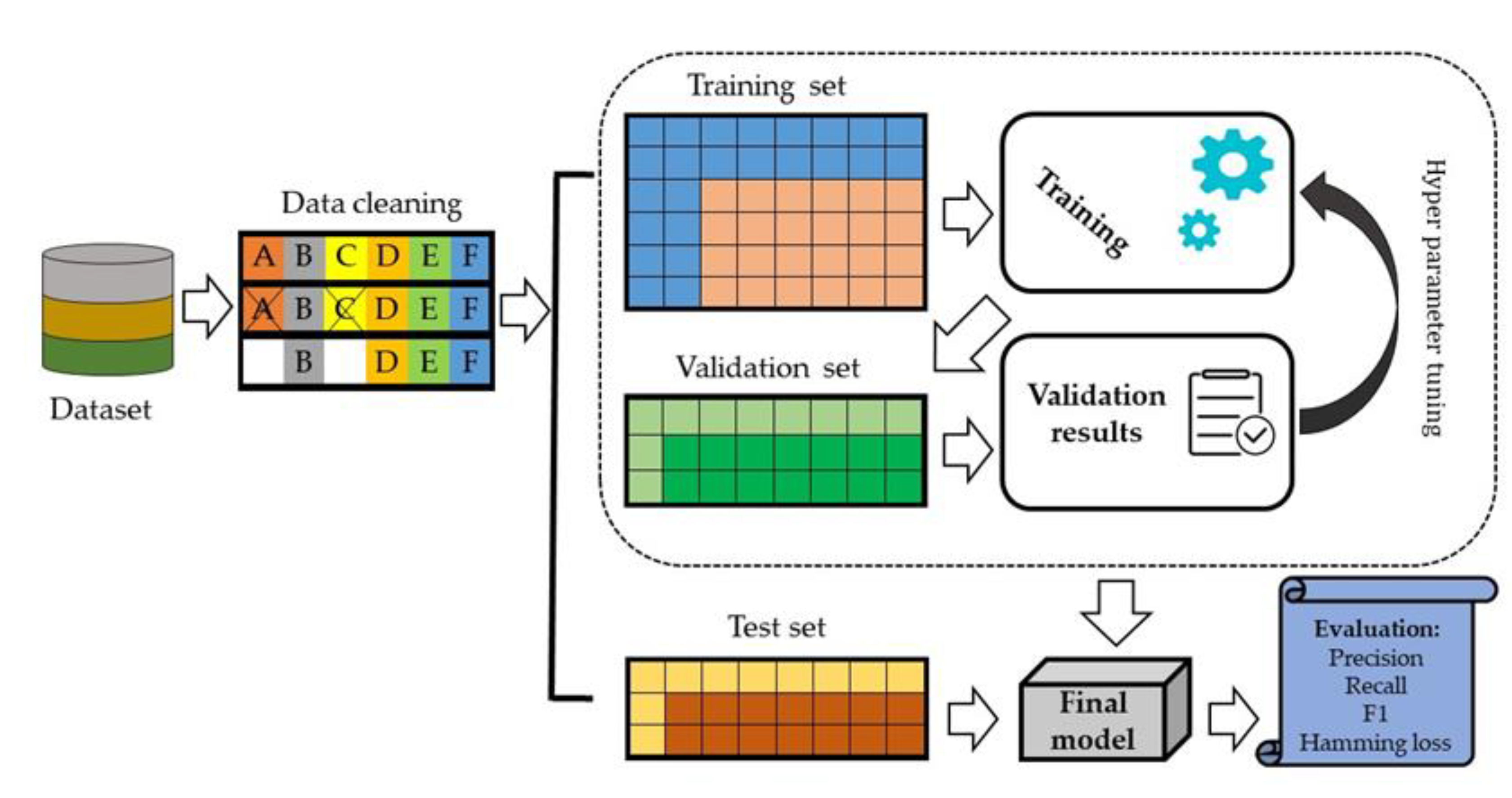
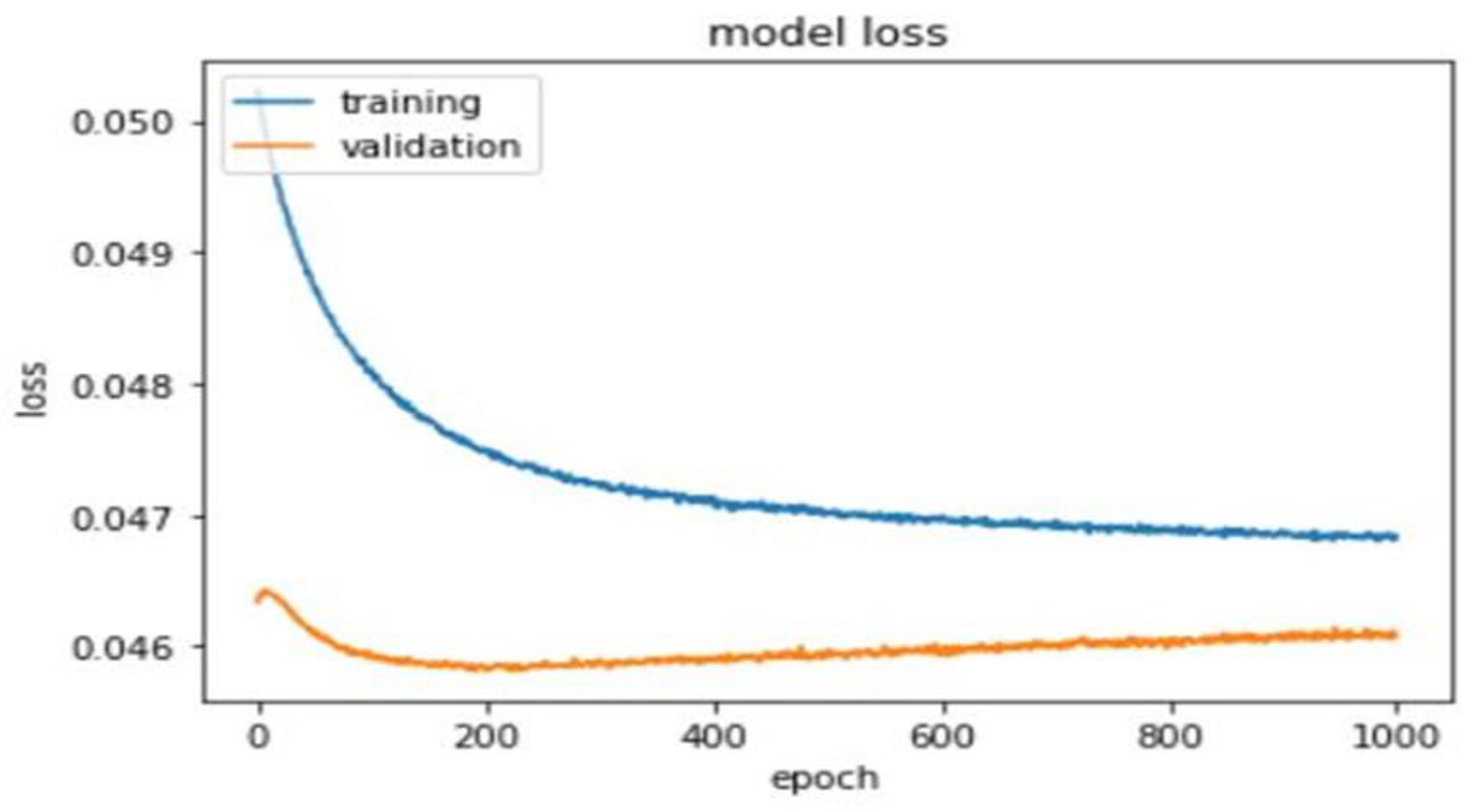
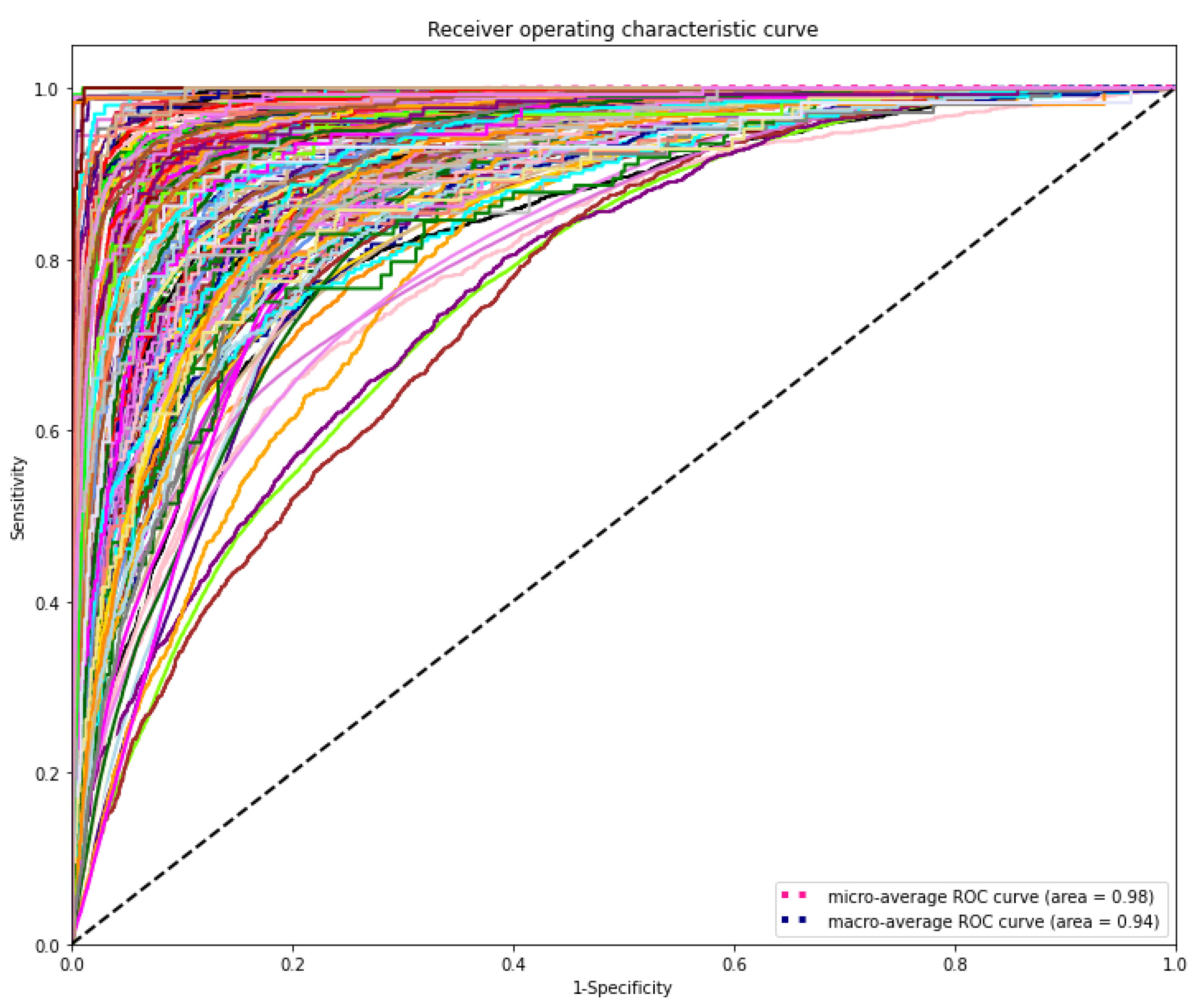
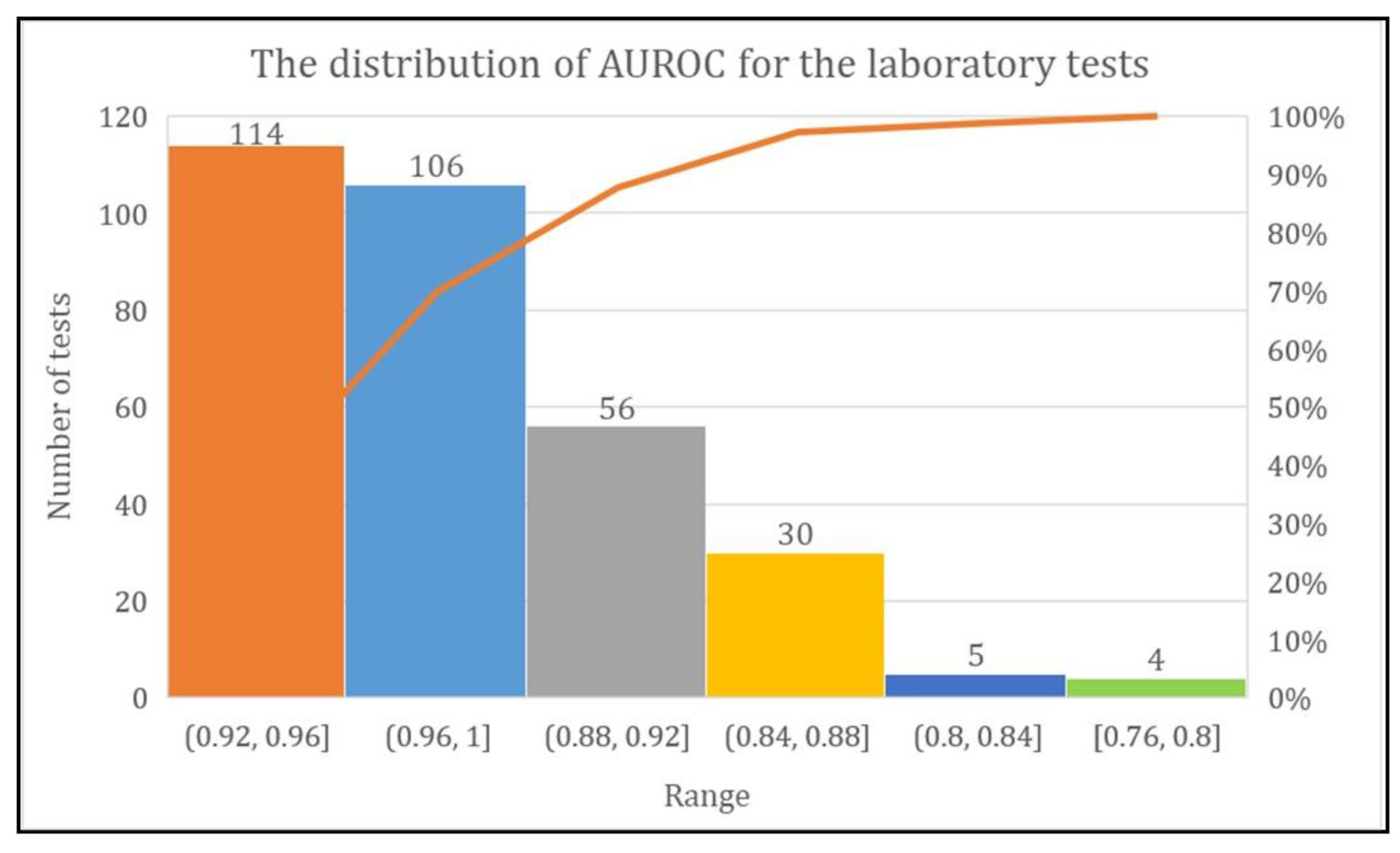

| Cut-Off | Precision | Recall | F1 Score | Hamming Loss |
|---|---|---|---|---|
| ≥0.01 | 0.24 | 0.96 | 0.37 | 0.082 |
| ≥0.05 | 0.32 | 0.89 | 0.46 | 0.038 |
| ≥0.10 | 0.39 | 0.83 | 0.52 | 0.025 |
| ≥0.15 | 0.44 | 0.76 | 0.55 | 0.019 |
| ≥0.20 | 0.48 | 0.72 | 0.56 | 0.016 |
| ≥0.25 | 0.52 | 0.66 | 0.57 | 0.014 |
| ≥0.30 | 0.55 | 0.61 | 0.57 | 0.013 |
| ≥0.35 | 0.57 | 0.57 | 0.55 | 0.012 |
| ≥0.40 | 0.61 | 0.51 | 0.54 | 0.011 |
| ≥0.45 | 0.63 | 0.47 | 0.51 | 0.011 |
| ≥0.50 | 0.65 | 0.42 | 0.48 | 0.011 |
Publisher’s Note: MDPI stays neutral with regard to jurisdictional claims in published maps and institutional affiliations. |
© 2021 by the authors. Licensee MDPI, Basel, Switzerland. This article is an open access article distributed under the terms and conditions of the Creative Commons Attribution (CC BY) license (https://creativecommons.org/licenses/by/4.0/).
Share and Cite
Islam, M.M.; Poly, T.N.; Yang, H.-C.; Li, Y.-C. Deep into Laboratory: An Artificial Intelligence Approach to Recommend Laboratory Tests. Diagnostics 2021, 11, 990. https://doi.org/10.3390/diagnostics11060990
Islam MM, Poly TN, Yang H-C, Li Y-C. Deep into Laboratory: An Artificial Intelligence Approach to Recommend Laboratory Tests. Diagnostics. 2021; 11(6):990. https://doi.org/10.3390/diagnostics11060990
Chicago/Turabian StyleIslam, Md. Mohaimenul, Tahmina Nasrin Poly, Hsuan-Chia Yang, and Yu-Chuan (Jack) Li. 2021. "Deep into Laboratory: An Artificial Intelligence Approach to Recommend Laboratory Tests" Diagnostics 11, no. 6: 990. https://doi.org/10.3390/diagnostics11060990
APA StyleIslam, M. M., Poly, T. N., Yang, H.-C., & Li, Y.-C. (2021). Deep into Laboratory: An Artificial Intelligence Approach to Recommend Laboratory Tests. Diagnostics, 11(6), 990. https://doi.org/10.3390/diagnostics11060990







